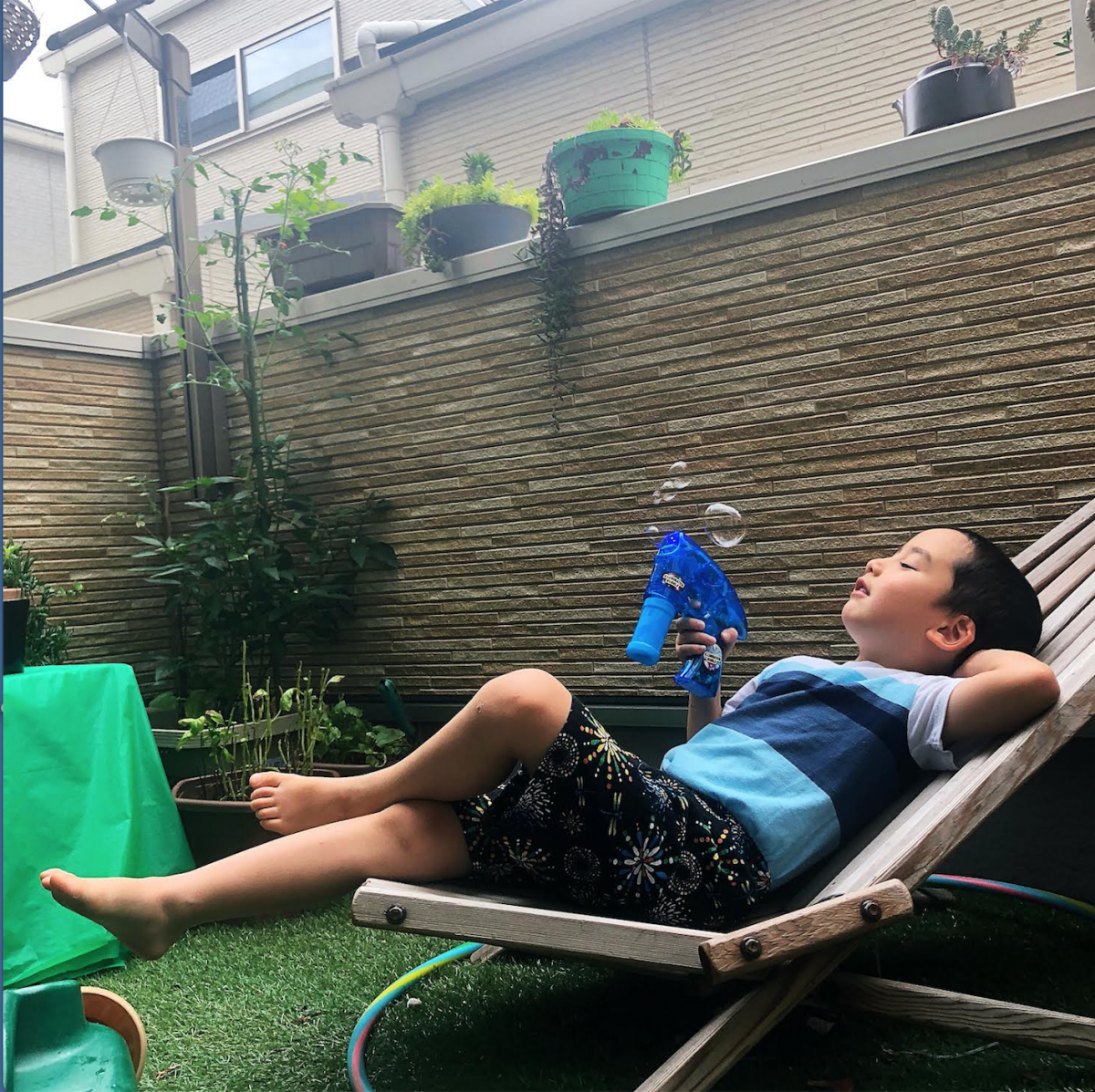This Global Home | Day 17: Japan
Hi, all! You made it to Tokyo; come in! I continue to be ecstatic over meeting this group of women living lives of faith overseas. I live here in this peaceful pocket of green, still in Tokyo proper. I write about life as a family of five, life surrounded by sushi, and the ongoing process of choosing to become rooted as we deal with the day-to-day of life in another culture.What can I get you to drink? Connect with me: InstagramBlogAlso, here for shots of the gardening life, and on this account that tells more of how my family and community walk out our beliefs in God.
The thing I want everyone to know, and what I quickly learned upon landing here, is that everything in Japan is small. From the roads, cars, mini garbage trucks and fire trucks, down to the cups of coffee. Everything. is mini. There will never be an Extra Big Gulp drink offered here. It can help you choose to be grateful!
Land is premium and with a population exceeding 36 million people, of course, buildings are slim.
We live in Tokyo proper, at the north, in a sweet three-story. Most neighborhoods are not fancy, but it is deceiving; here, land is PREMIUM. We build vertically. If you compare what you get in yen here compared to what we could be living in back in the US, well, then you’ll get major cases of envy. It happens sometimes when I return from great trips to my family and friends. Their verdant lawns alone would be housing some three Japanese apartment buildings, easily. I return here to my simple and multifaceted life in Japan, make peace, and walk in its tread.
Our home’s selling points are the driveway (such a rarity here) and balcony. This is a land of line-drying clothes, but most people only have space for the laundry and little else. I am practically farming ours and sending the kids out with bubbles.
The driveway is a help because in our previous house, opening the front door could result in a lopped up nose. That is how close cars came to the door. Hazardous. Now we have a driveway (!! rare here!!) and extra freedom. This is where I have a front garden of figs, hydrangea, and jasmine that threatens to take over the house.
Our kitchen is a narrow galley-style, with storage that we doubled by bringing in a full-sized dresser from IKEA and buying a wooden top cut to size by a local tatami floor artisan who then delivered it to us by hand-trolly.
This is a picture on our bedroom dresser of our daughter ending preschool and beginning elementary school here. It is a ceremony and I proudly wore kimono. Our youngest child was not born yet.
I made my first kinsugi, the ancient art form where broken pottery is repaired with the added beauty and strength of gold. I gifted this to my husband and it seems like a fitting picture of God’s change in our lives if we allow ourselves to be broken first, continually humble, and seeking beauty that is internal. It is my hope that in the pain of leaving home 10.5 years ago and finding room in a new land and culture, I am stronger for it, and more filled with wisdom. I trust that as a couple, we will continue to walk in that strength, too—the victory of being renewed.
Our room is on the first floor and the kids’ rooms are on the third floor—a set-up that just would not be in a western home. Japanese families generally sleep together in one room on one large expanse of futon. The sleeping room would have nothing else in it; the room for clothes would house the whole family’s wardrobe.
Our room has a skylight which brings lots of light. I take advantage for plants like my monstera.
Speaking of light: This is our guest room with a pull-out couch bed where our family friend from Israel stayed for her semester abroad here. This is where you put friends and family who travel the distance to see us. There is the backpack our eldest daughter unloaded when she arrived home from school.
This rocking horse was given to us by a kind Singaporean neighbor who moved away. The horse has been used by our third child now, but it has its own history before that—-there is a sticker underneath the horse that says “Made in West Germany.” Historic!
Our kid's bunk together on the third floor, the girls (ages 8 and 2) in bunk beds (“nee-dahn-bed-oh” in Japanese) and our son (age 5) in his very high loft in the same room. He climbs up eleven steps to get up and down!
Moving into a narrow Japanese home or apartment takes craft, blessing, and luck. Stairways are tight and we have taken off bits of wall and paint by bringing couches up. After much strategizing and removing the railings it seemed we’d have to lift our fridge up through a window on our second floor. In the end, we got it up the stairs.
Japan does not have central heating/cooling, so we rely on hulky, gaping aircon units taking up half a wall. To me, they are ugly and industrial, crowding out any wall space that could otherwise be occupied by art, or at least negative space.
I see little other than the unit here. You should see how mammoth the living room unit is! It is like a school bus parked on the wall near the ceiling. My friend, a longtime visual designer in the US, helped me problem-solve and plan our small space living room some time back. Much of her advice about our narrow house was about managing what I wanted guests to see. I could frame what I wanted them to see and reign in their focus using candles, curtains, and lighting. I realize I do that on my Instagram, favoring tight, close shots. The big picture of our small space can be overwhelming to me.
Some messes show life and a party. If you squint, you can make out the red of our rice maker, a kitchen appliance on every Japanese counter.
I asked my husband to put up these three narrow shelves which are pretty fun for arranging candles, plants, or any small craft in between the dining room and kitchen. The single wider shelf hangs between a very awkward window and a couch. If I could, I’d run shelves all over the home.
Here’s another tight space:
This is a Japan experience that many first-time visitors may nervously question: Is that water coming out of the sink above the toilet, begun when I flushed, CLEAN? You bet. If it wasn’t, would I have it in my home? No, sir. This is called efficiency and environmental wisdom. That water would just go down the toilet and pipe, anyway. This way it provides the function first. Everybody wins.
Speaking of function, do you know the hype that is Japanese tubs? They are digital, my friend. This means you can run a bath and that bath continues to heat for you. No running it only to find it is almost immediately tepid/cold. You can keep it HOT. Also, should your kids splash? NO PROBLEM. The bathtub is the same as the shower floor, meaning there is a drain. No water damage. Just fun.
More bathroom notes: Not everyone owns dryers here or washing machines, for that matter. Japan is comprised of neighbors who hang their line (and hang out futons) on sunny days.
This is our second floor, next to the living room. This veranda is where we hang any clothes or air out winter blankets. It’s also home to my backyard garden, the place for us to check the weather each morning, pick mint, peppers, and tend to our morning glory and vining passionfruit.
Please reach out, especially if you come to Japan. We’ll already be friends. Heck, already seen my home.
We would love if you shared this Pin!















